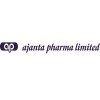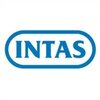


i
Filter interviews by
Torrent Pharmaceuticals Apprentice Trainee Interview Questions and Answers
Torrent Pharmaceuticals Apprentice Trainee Interview Experiences
1 interview found
(1 Question)
- Q1. What is ich guidelines
Top trending discussions






Interview questions from similar companies

Apprentice Trainee Interview Questions & Answers
Sun Pharmaceutical Industriesposted on 17 May 2021
I applied via Walk-in and was interviewed in Nov 2020. There was 1 interview round.
Interview Questionnaire
2 Questions
- Q1. Why we select you ?
- Ans.
I bring a strong work ethic, eagerness to learn, and a collaborative spirit that aligns with your team's goals.
Proven ability to adapt quickly in fast-paced environments, demonstrated during my internship where I successfully managed multiple projects.
Strong communication skills, as shown in my role as a team leader in a college project, where I facilitated discussions and ensured clarity.
A passion for continuous learn...
- Q2. Why you want this job ?
- Ans.
I am eager to join your team to gain hands-on experience and contribute to meaningful projects while developing my skills.
I am passionate about learning and growing in a professional environment.
This role aligns perfectly with my career goals in the industry.
I admire your company's commitment to innovation and quality.
I believe my skills in teamwork and communication will add value to your team.
Interview Preparation Tips

I applied via Walk-in and was interviewed in Jul 2020. There was 1 interview round.
Interview Questionnaire
1 Question
- Q1. What about you? And your introduction,? Qualifications, and some questions about the pharma subjects, and why you choose that path or this line of studying?
Interview Preparation Tips

I applied via Approached by Company and was interviewed before Jun 2021. There were 2 interview rounds.

(1 Question)
- Q1. How many years you stay in this organisation?
- Ans. This organisation is really good, if I thought I will continues upto retirement.
Interview Preparation Tips

Apprentice Trainee Interview Questions & Answers
Akums Drugs & Pharmaceuticals Limitedposted on 11 Oct 2021
I applied via Campus Placement and was interviewed before Oct 2020. There was 1 interview round.
Interview Questionnaire
1 Question
- Q1. Define sterilization?
Interview Preparation Tips
On completion of apprentice training u will get 10kOne time and 15.5k monthly. On confirmation u get 10k one time.

Interview Questionnaire
2 Questions
- Q1. How u trouble shoot on line ups when it break down..?
- Ans.
Troubleshooting line-ups involves systematic diagnosis, identifying root causes, and implementing effective solutions.
1. Identify the symptoms: Check for error messages or unusual behavior in the line-up.
2. Review logs: Analyze system logs for any anomalies or patterns leading to the breakdown.
3. Check connections: Ensure all physical and network connections are secure and functioning.
4. Isolate components: Test indivi...
- Q2. Pass..

I applied via Naukri.com and was interviewed in Sep 2020. There were 3 interview rounds.
Interview Questionnaire
1 Question
- Q1. Interview Questions on Chemistry
Interview Preparation Tips

Associate Interview Questions & Answers
Akums Drugs & Pharmaceuticals Limitedposted on 12 Jun 2021
Interview Questionnaire
7 Questions
- Q1. Tell Me About Yourself?
- Q2. What Motivates You?
- Q3. Why Do You Want This Job?
- Q4. What Can You Bring to the Company?
- Ans.
I bring a unique blend of skills, experience, and a proactive attitude that aligns with the company's goals and values.
Strong analytical skills: I successfully led a project that improved efficiency by 20% through data analysis.
Team collaboration: I have experience working in cross-functional teams, enhancing communication and project outcomes.
Adaptability: I quickly learn new technologies and processes, demonstrated w...
- Q5. What Are Your Greatest Strength?
- Q6. What is Your salary Range expectation?
- Ans.
I expect a salary range that reflects my skills, experience, and the industry standards for this role.
Research industry standards: For example, similar roles in my area typically offer between $60,000 and $80,000.
Consider my experience: With 3 years in the field, I believe a range of $70,000 to $85,000 is appropriate.
Factor in company size and location: Larger companies in urban areas often pay more, so I would adjust ...
- Q7. Do You have any Question?
Interview Preparation Tips

(1 Question)
- Q1. My m.phram project discussion and some of basic related equipment and guidelines

I applied via Walk-in and was interviewed in Dec 2022. There were 2 interview rounds.

(6 Questions)
- Q1. They will ask about vcrs theory And its full form
- Q2. What is comressor and how it's work
- Ans.
A compressor is a mechanical device that increases the pressure of a gas by reducing its volume.
Compressors are commonly used in refrigeration and air conditioning systems.
They work by taking in low-pressure gas and compressing it to a higher pressure.
This compression process reduces the volume of the gas, resulting in an increase in pressure.
Compressors can be classified into positive displacement and dynamic types.
Po...
- Q3. What is latent heat
- Ans.
Latent heat is the heat energy absorbed or released during a phase change without a change in temperature.
Latent heat is the energy required to change the state of a substance without changing its temperature.
It is absorbed or released during phase changes such as melting, boiling, or condensation.
Latent heat is responsible for the cooling effect of sweating.
Examples include the heat absorbed when ice melts into water ...
- Q4. What typ of condenser used in domestic air condictioner
- Ans.
The type of condenser used in domestic air conditioners is typically the air-cooled condenser.
Air-cooled condensers are the most common type used in residential air conditioners.
They work by using a fan to blow air over the condenser coils, which helps to dissipate heat.
This type of condenser does not require a separate water source for cooling.
Examples of air-cooled condensers include the coil and fin condenser and th...
- Q5. What is the role of capikary tube in refrigeration cycle
- Ans.
The capillary tube is a component in the refrigeration cycle that helps regulate the flow of refrigerant.
The capillary tube is a small, narrow tube made of copper or aluminum.
It is located between the condenser and the evaporator in the refrigeration system.
Its main function is to restrict the flow of high-pressure liquid refrigerant from the condenser to the low-pressure evaporator.
By creating a pressure drop, the cap...
- Q6. What is refregiration cycle explain it with digram
- Ans.
The refrigeration cycle is a process that removes heat from a space and transfers it to the external environment.
The cycle consists of four main components: compressor, condenser, expansion valve, and evaporator.
The compressor compresses the refrigerant gas, raising its temperature and pressure.
The high-pressure gas then flows into the condenser, where it releases heat and condenses into a high-pressure liquid.
The liqu...
Torrent Pharmaceuticals Interview FAQs
Tell us how to improve this page.
Torrent Pharmaceuticals Interviews By Designations
- Torrent Pharmaceuticals Executive Interview Questions
- Torrent Pharmaceuticals Medical Representative Interview Questions
- Torrent Pharmaceuticals Technical Assistant Interview Questions
- Torrent Pharmaceuticals Scientist II Interview Questions
- Torrent Pharmaceuticals Assistant Manager Interview Questions
- Torrent Pharmaceuticals Scientist Interview Questions
- Torrent Pharmaceuticals QC Executive Interview Questions
- Torrent Pharmaceuticals Business Manager Interview Questions
- Show more
Interview Questions for Popular Designations
Overall Interview Experience Rating
based on 1 interview experience
Apprentice Trainee Interview Questions from Similar Companies
Torrent Pharmaceuticals Apprentice Trainee Reviews and Ratings
based on 13 reviews
Rating in categories
|
Executive
2.3k
salaries
| ₹3.1 L/yr - ₹12.5 L/yr |
|
Assistant Manager
621
salaries
| ₹10.4 L/yr - ₹17.6 L/yr |
|
Medical Representative
313
salaries
| ₹2.3 L/yr - ₹6 L/yr |
|
Technical Assistant
311
salaries
| ₹1.7 L/yr - ₹5.3 L/yr |
|
Scientist II
259
salaries
| ₹2.8 L/yr - ₹12.5 L/yr |

Cipla

Dr. Reddy's

Lupin

Zydus Lifesciences
- Home >
- Interviews >
- Torrent Pharmaceuticals Interview Questions










